“Expanded Use Antique” plate registration for the State of Illinois.
Fee For This Transaction
Renewal Fee : $45.00
Payment Processor Fee : $1.01
Total Fee : $46.01
“Expanded Use Antique” plate registration for the State of Illinois.
Fee For This Transaction
Renewal Fee : $45.00
Payment Processor Fee : $1.01
Total Fee : $46.01
The air conditioning had not worked in several years. Around 2011, I replaced all the hoses and had the system charged with R12 which worked well for several years. Over the past few years, it would work intermittently for awhile, then failed altogether. I had tried troubleshooting it, and thought the refrigerant was leaking and possibly low. I borrowed AC gauges and checked pressures. Tracing the circuit lead me to the low pressure switch. When I shorted it, the compressor would start. The switch looked like it needed to be replaced. I purchased a new switch:
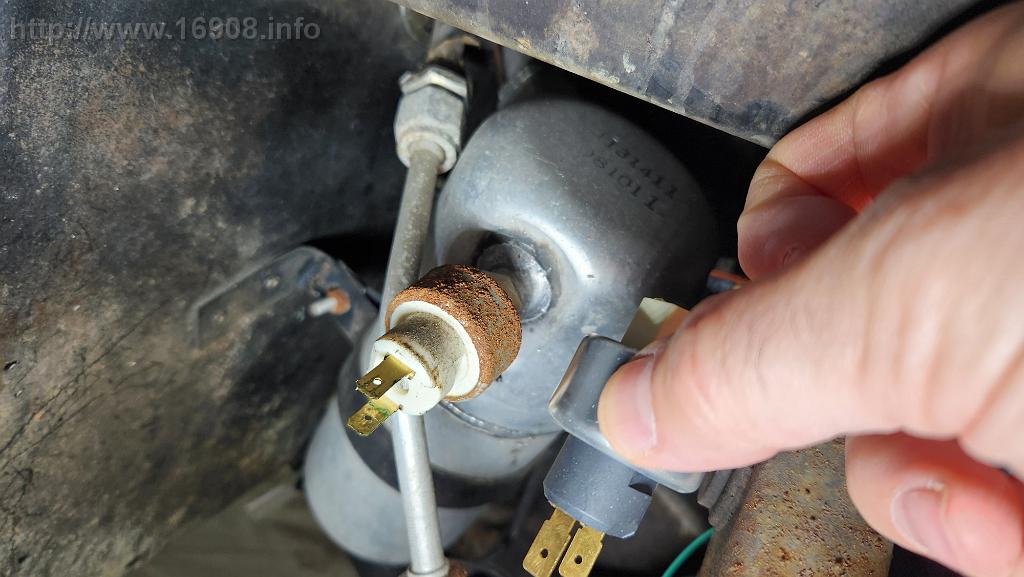
After some more troubleshooting, and some help from Delorean Midwest, the replacement switch worked!
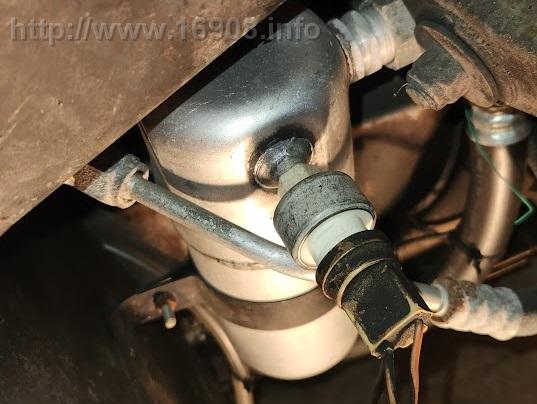
Costs:
| Item | Purchase Date | Vendor | Quantity | Cost | Shipping | Tax | Total |
| Low Pressure Switch | 6/28/2023 | Delorean Midwest | 1 | $ 11.57 | $ – | $ 11.57 | |
| O Ring | 6/28/2023 | Delorean Midwest | 1 | $ 0.29 | $ – | $ 0.29 | |
| $ 0.92 | $ 12.78 |
Here’s some items I’ve purchased over many years, that were never documented.
This is the Snapon 8mm external socket needed for the drain plugs on the car. It has gone up in price since 2008, and there are alternatives available. I haven’t had any issues with the Snapon socket.
Here’s a tool that will lock the flywheel in place while you remove either the flywheel, or the crank pulley. I’m not sure why I bought it since I don’t have an engine with a flywheel.
Stainless blending pads, a box of 10. 12 years later, I’ve used 2 of them.
US Motor Works Water Pump for a Volvo from Rockauto. I purchased this with other items I’ve listed on the blog, so I’ve left the shipping as $0. A bolt-on pulley is needed for this pump, which I currently do not own. These pumps don’t have the country they were manufactured in listed, and the quality is notoriously poor. I would maybe use this in the short term while waiting for a quality waterpump to be delivered. I couldn’t pass up a $22 waterpump:
Costs:
| Item |
Purchase Date |
Vendor |
Quantity |
Cost |
Shipping |
Tax |
Total |
| Socket, Metric, Pipe Plug, External, 8 mm P/N PMM408A |
4/27/2008 |
snapon.com |
1 |
$ 13.65 |
$ – |
$ 1.05 |
$ 14.70 |
| Scotch-Brite Stainless Pads |
4/4/2010 |
Amazon.com |
1 |
$ 24.90 |
$ 6.55 |
$ – |
$ 31.45 |
| Flywheel Removal Tool |
7/14/2015 |
Billy C |
1 |
$ 35.00 |
$ – |
$ – |
$ 35.00 |
| US Motor Works Water Pump |
5/18/2022 |
Rockauto.com |
1 |
$ 21.89 |
$ – |
$ – |
$ 21.89 |
|
$ 103.04 |
I’m liking the reduced cost of these Expanded Use Antique Plates.
Fee For This Transaction
Renewal Fee : $45.00
Payment Processor Fee : $1.01
Total Fee : $46.01
At my car club’s 2022 Fall Tech Session, I discovered there was a coolant leak somewhere in my engine’s “valley of death” or VOD. I was able to get some pictures underneath the intake manifold with a friend’s digital borescope:
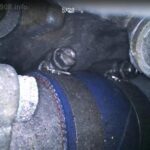

I’ve always had some corrosion around the waterpump hoses, probably from leaking coolant. It’s recommended to remove the intake to inspect and clean the valley every 10 years or so, and in 15 years of ownership, I had never done this. I would also tackle a few other jobs like replacing the last remaining stock fuel hoses and replacing some coolant hoses. I decided it was time.
November 18th, 2022: I printed out a VOD How-To guide. I started carefully tagging, photographing, and removing everything.






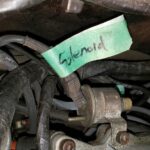
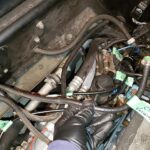

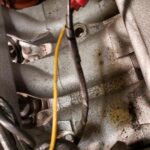


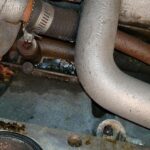
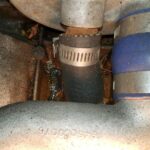

November 25th: Once I accessed the valley, I saw a bolt in one of the cavities. The cavity was also filled with oil and had what looked like epoxy around it:


It appeared one of the car’s previous owners had tried fixing a hole in the valley tapping the hole and plugging it with a bolt. Then maybe they used epoxy to fill the space after? I’m not sure what they did, but it appeared my engine was suffering from “block rot” and their fix was starting to fail.
The PRV’s engine valley has been nicknamed the “valley of death” because this area has been prone to rotting through, into the crankcase. Coolant that has leaked can sit in the valley, and turn acidic over time, eating away at the aluminum. There’s also evidence that flaws may exist in some engine castings. Once holes appear in the valley, it’s tough to get a permanent fix. Most engines get replaced, while some have found success with welding plates over the cavities. It’s not recommended to use any epoxy, since it’s hard to clean the aluminum to get a good bond, and differences in expansion and contraction eventually separate the epoxy from the aluminum.
November 27th: I pressure tested the coolant system to be sure there wasn’t any coolant leaks or head gasket leaks causing coolant to leak into the valley.
I started evaluating my options:
Option 1: Purchase a new engine, and possibly transmission as well. I found a decent engine at Delorean Midwest, along with an automatic transmission. It had less miles than my current engine. My current transmission leaks fluid horribly, so this could be an opportunity to fix that issue as well. The price was affordable, and I could possibly disassemble my current engine and sell some parts to recover some money spent. I could also use the lower engine casting on my now dormant 3.0 engine project. The replacement engine could solve a lot of issues quickly.

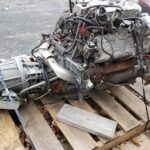
Option 2: Resurrect my 3.0 EFI Engine build. It’s been sitting in my garage for over 10 years now. Since purchasing it, I removed some accessories, the timing cover, and valve covers. I then removed it from the engine stand so it would not distort over time and placed it onto a 2X4 frame with casters. I never tested compression, which I should have done before removing the valve covers and timing cover. I would need to learn about Electronic Fuel Injection and acquire many parts to replace the K-Jet mechanical fuel injection.
Option 3: Convert the car to electric. I’ve always wanted an electric car, and I’ve seen a few electric Deloreans in person. I could finally eliminate coolant, oil, and transmission leaks. I could have a very powerful motor, capable of more than doubling the PRV’s 130 horsepower. This would take some significant re-engineering, which was very daunting. This could possibly take a few years to complete. I followed all the electric Delorean conversions in the forums. I watched all the Project Lightning videos. I started learning CAD software to possibly design parts. I made a budget and started pricing out components. I visited a friend to see his electric Delorean build in progress:
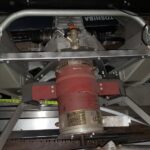
I read through a book on building electric cars. After evaluating many types of motors, I chose a used tesla small front drive unit which I hoped to mount forward of the rear axles, and finally making the Delorean “mid-engine.”
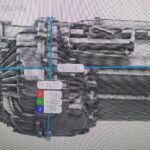
I found Porsche axle adapters to connect the stock Delorean axles to the drive unit. I evaluated batteries to purchase. I looked for a controller, cables, and other electrical components needed. I mocked up the drive unit with carboard, and after a lot of measuring, found the drive unit would not fit where I wanted it. The tesla drive units are also not as simple as I had hoped, especially with their using coolant for thermal management. The conversion seemed more and more difficult at every decision point. After many hours of research, I finally abandoned this option.
Option 4: Get plates welded over the deep cavities. This option could be the cheapest and quickest route, last at least a few thousand miles, and allow me to pursue a more permanent fix in the long term. I contacted welders and found one nearby who works in the automotive industry and had lots of experience welding to cast aluminum.
January: I finally decided on Option 4 in the short term, and possibly revisit other options in the long term. I was now faced with either transporting the disabled car to the welder, and back, or pull the engine and transport it to the welder. Pulling the engine would be the easier route and allow me to fix and replace a few other items of concern. I already own an engine hoist, so I decided to pull the engine.
January 15th: I removed the Y pipe. The bolts are notoriously difficult to remove, and sometimes break, but the bolts came right out, probably because a previous owner had done maintenance in the engine before I bought the car. I also found out lots of coolant remains in the pipe even after draining the coolant at the radiator:
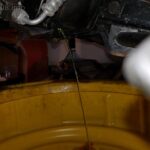


January 16th: I removed the heater pipe, which I plan to eliminate with a long hose to the pipes on the frame. The heater pipe appears to have original 40-year-old hoses on it, another justification for going into the VOD:

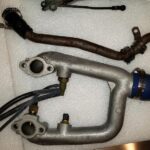
January 21st: I got some 1″ x 3′ aluminum stock and cut some pieces to (hopefully) be welded over the holes. I wasn’t sure if the aluminum stock would work, and neither was the welder, but I wanted to be as prepared as possible.


February 2nd: Fascia removed, muffler removed, engine cover removed, water pump bleeder disconnected, water pump hoses disconnected, AC belt removed:
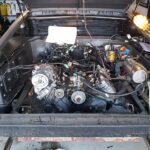
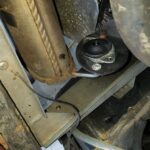
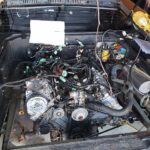
February 3rd: AC compressor unbolted, alternator disconnected, starter disconnected, oil pressure sensor disconnected… or tore the wire from the terminal… I’ll fix that later. Other sensors disconnected, wire harness moved out of the way, vacuum on heater valve disconnected, penetrating oil on the block drains.

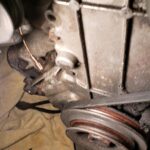

February 4th:
-Disconnected Oxygen sensor
-Disconnected Heater valve
-Drained driver’s side coolant block drain (Couldn’t budge the other side, leaving it for now)
-Drained trans fluid
-Removed the frequency valve from the valve cover
-Axles removed

February 10th: I built a frame out of 2X4s to cradle the engine and transmission during transport. I decided not to separate the engine and transmission, due to complexity and time. My plan is to rent a truck, hoist the powertrain into the truck bed, and deliver it to the welder who would lift it out. I could get the truck back in under 90 minutes, which would only cost me around $75. I would need to rent the truck again in two days to bring the engine back to my garage.
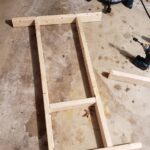
I could never drain the passenger side coolant drain, so I bought a rubber stopper to plug the hole where the Y pipe connects, and prevent coolant from sloshing out:


February 12th: I left the bolt in place to prevent dirt and coolant from entering the crankcase. While preparing to send the engine to the welder, I decided to thoroughly clean the valley and remove the bolt. It appeared the bolt was plugging a hole in the valley, but I discovered it was only lodged into some thick dirt, oil, and coolant. This looks like a lost Y pipe bolt from a careless mechanic, not a bolt plugging a hole!


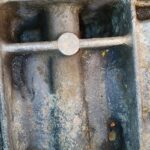
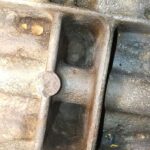
I canceled the appointment with the welder and started preparing to clean and paint everything in the engine compartment.
March 4th: I took more parts off the car! I removed:
• The coolant tank, brackets, and a coolant pipe
• the wiring harness
• carbon canister cover, carbon canister, vacuum tank
• heater hoses from the engine to the pipes on the frame. Hoses look original
• dismounted one side of the sway bar. The other passenger side bolt spins. Hmm…
• original fuel hoses on the passenger side
I’m working on
• Removing the fuel filter, and fuel hose leading to it. I have a replacement filter
• Prepping the sway bar for painting. Lots of rust on it. I wire brushed it, then used emery cloth.
• Cleaning off the fiberglass and prepping it for paint.
March 6th:
– Sway bar painted gloss black
– Unmounted and wrestled off the fuel filter. Had to buy a 19mm line wrench. Got a face full of debris and splashed with gas working under the car.
There are not many more parts I can take off in the engine compartment. I hope to start putting some back on!
March 12th: Removed…
-Y pipe seals
-Intake to head seals
-Transmission pan
-Transmission governor connections
-Heater hoses from head to hot water valve
I hope to get the transmission sealed back up this week.
March 19th: I spent several hours cleaning belt shavings, CV joint grease, and corroded coolant off the engine. It looks better.
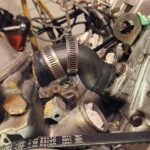
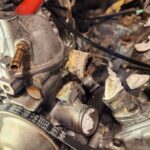



March 21st: I painted the engine bay with SEM Trim Gloss Black. Before:
March 23rd: I cleaned off the transmission pan and hoisted the powertrain up so I could work underneath it… carefully… to avoid dropping it on myself. I re-sealed all the governor connections and dipstick tube with extra Permatex black gasket maker around the casing. I used the same Permatex gasket maker on the pan, which should hold well. I opted not to use a gasket. I followed the directions on letting it sit for several minutes, then torquing it to spec. Finally, I smeared Permatex around the outside of the pan. This is 3rd or 4th time I’ve re-sealed this transmission pan, and I am determined it will be the last…
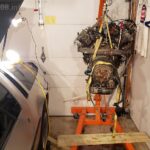
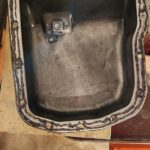
Looks like an oil leak somewhere on my engine!
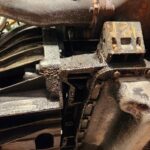
The frequency valve hoses will remain stock for now:

March 25th: Fuel filter bracket painted, new filter, mounted with new stainless hardware. One of the first parts to get reinstalled!
I invited some local Delorean owners over to help me reinstall the engine. While examining the void in the shock towers of the frame, we found the epoxy had pealed off the steel! I didn’t have a good way to remedy this, so I grabbed a can of Rustoleum Smoke Gray spray paint, and sprayed into the void, trying to coat the bare steel.
After a lot of repositioning, and maneuvering, we finally got the engine in the cradle, and the transmission bolted in place!
March 27th: I decided to replace the old heater hoses, control valve, the corroded clamps and tee needed for bleeding air out of the system.
-New red gates hoses! With the maze of black hoses and wires, the red coolant hose is a nice contrast.
-New brass tee from 88Miles
-New valve from Delorean Midwest
-New stainless peromi t-bar clamps:
April 1st:
-Suspended transmission governor wiring
-Connected trans fluid hoses to heat exchanger
-Installed new heater hose to eliminate the heater pipe, along with 3 hose clamps!
-Installed a cushioned hose clamp to secure the heater hose at the Y pipe bolt.
-Fascia mounting plate painted
-Painted various brackets
Here’s the cushioned (shiny!) stainless hose clamps, which I used to secure the heater hose in the VOD. They also exactly matched the clamp for the frequency valve:
April 2nd: The coolant pipes had corrosion and undercoating on them. I wire brushed them, used scotchbrite, cleaned and painted them with rustoleum high temperature engine primer and paint. I hope this stuff works well.
-Y pipe installed with new O rings, bolts with antisieze and torqued to spec
-AC compressor mounted
April 15th: Axles Rebuild #4! This time I only had to rebuild one axle. I had to purchase another axle flange from a Porsche parts store after I spotted another tear in an axle boot. I’ve been fooling myself for years, reusing these mangled flanges that a previous owner damaged. The damaged flanges won’t hold the boot properly, and sometimes cut into it. I also replaced the last two stock hex head bolts with socket head bolts.
The cooling system is just about done. I painted the brackets, enamel coated the pipes, new otterstat seal, new t- bar clamps, new hoses, and cleaned off a lot of corrosion:



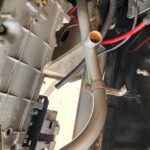
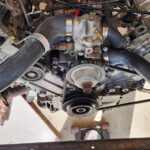
The stainless T-Bar clamps, along with the enamel coated coolant pipes look great!
I painted many parts gloss black, even the bolts and washers. I also have new blue silicone vacuum hoses!
I removed the distributor cap and cleaned the contacts with emery cloth. I opted not to replace it:
I cleaned all the spark plug wires. I chose not to replace them at this point:
Current view:
April 17th: New fuel feed and return hoses arrived from Delorean Midwest. I had to dismount the fuel filter to connect the new hoses. Now it’s reinstalled, hopefully for another 40 years.
Next up: wiring harness, intake manifold, and fuel distributor. Maybe I can have the engine running in the next 7 days?
April 23rd: Current state. My goal for tomorrow is to finish the engine bay and start the car.
April 24th: I took a vacation day, worked all day, overcame a few setbacks, but I still couldn’t get it done. The “pipe of agony” lived up to its name, I should have never called it the “pipe of ease.” I also lost an allen wrench somewhere, and it’s really bugging me.
Just before I quit today, I installed the battery, lit up the dash, and bumped the starter. I need to torque down the fuel hoses, fill the fluids, and check all the electrical connections again.
Almost done.
April 27th:
I jumped the RPM relay to prime the fuel lines. Sure enough, there’s a leak, possibly between the right-angle fitting and fuel filter. I used the required teflon tape on the connection….
So close to being done.
April 30th: I disconnected the fuel feed hose at the fuel distributor and was able to continue to spin the filter onto the fitting. In total, I’ve spun it about 400 degrees. I jumped the RPM relay to confirm gas is flowing – it is! The fuel pump does its job well. Within a few seconds, I had about two cups of gas in a container.
I needed some copper washers, and had a set I bought many years ago. The tape on the washers deteriorated, and left residue on the washers. I had to carefully clean them without bending them:
After reattaching the fuel hose (with new washers), I primed the line once more. It’s still leaking, albeit much slower now. I’m also not sure from which end of the fitting it’s leaking.
I tried starting the car, and…. it cranks but does not start. Engines need air, fuel, compression, and spark. I’ll check for spark another day when I have a helper.
May 3rd:
-Tachometer jumps when cranking
-less than 3 volts at the coil – not enough
-less than 9 volts at the ballast resistor
-less than 9 bolts at the ignition post on the starter
I’m going to charge the battery again and clean the starter connections.
May 6th: I cleaned all the starter connections, and the car still only gets around 8 volts before the ballast resistor. I’m going to study the ignition circuit again. I also found another fuel leak.
May 7th: Checked some basic things:
-coil reads .7 ohms of resistance: correct
-coil works with a crude circuit made from a battery, spark plug, and some wires.
-ICU wire connection is secure.
The ignition circuit is very confusing.
May 10th: After studying the ignition circuit for several days, testing voltages, resistances, and current flow, I was getting stuck with the test light not pulsating between the negative post on the coil, and the positive jump post. It’s supposed to do this on startup. Possible problems could be the ignition ECU, or the distributor. I un-buried the ignition ECU, disconnected, and reconnected it. The car wouldn’t start.
I enlisted the help of some awesome friends and local owners. Their car is essentially identical to mine. While all Deloreans may look alike, their Delorean has all the exact same features as mine since they were both built on the same day or within a few days, and their car is only 10 VIN numbers away from mine!
I started tracing wires, which brought me back to the connection to the distributor on the driver’s side of the firewall. After comparing the same connection on my friend’s car, mine felt loose, and I finally saw the female terminals had become dislodged in the plastic connector!
After fixing the connection and trying to start the car – THE ENGINE ROARED TO LIFE!
I also fixed one fuel leak. I’ve got several things to do, but I now have hope I’ll be driving the car in a few weeks.
May 14th: I’m still fighting leaks with the fuel filter fitting. I wrapped tissue and tape around each end of the fittings and jumped the rpm relay for a few moments so I could find out which end was damp. I confirmed the leak is between the filter and the brass fitting. I ended up spinning the filter onto the fitting more, which twisted up the feed hose on top. I finally disconnected the hose and spun the filter down to the brass fitting as far as I could. Now I’m fighting to get the hose reattached with new washers.
May 15th: After lots of research in the DMCTalk forums, and Facebook Delorean groups, I found the fuel filter to brass elbow connection is very difficult to seal. The previous filter had exposed threads on the brass fitting, but I now know all fuel filters are not created equal. If the stock fitting wasn’t going to work, I was going to buy the DeloreanGo version which doesn’t have tapered threads and utilizes a copper sealing washer. I was able to spin the filter all the way down to the brass fitting, finally sealing the connection!
I also fixed a coolant leak and started the car again.
May 21st: I painted the back of the fascia with SEM Trim Gloss, painted the brackets and bolts with Rustoleum Gloss Black, and started mounting the fascia:
May 25th: I poured in a gallon of automatic transmission fluid, only to have it start quickly leaking out around the poorly sealed pan. I drained the fluid again….
May 26th: I decided to reuse the old transmission pan gasket, and Permatex anerobic sealant around the gasket. I torqued the bolts to spec, and hoped this would be the last time I would seal the transmission pan!
May 27th: I found I used the anerobic sealant incorrectly, and it didn’t cure at all. I removed the pan once again and started cleaning off the sealant. Even if the the sealant did cure correctly, it probably would not have never bonded to the used (oily) gasket.
May 28th: I ordered two new transmission pan gaskets from DeloreanGo. It’s a nitrile bonded cork gasket – i.e. a modern version of the original cork type, much more flexible, and seals very well. I bought a spare, because of all my bad luck sealing this pan, and shipping from Europe is expensive! This is the second time I’ve purchased this item.
May 29th: I bought an M7 tap to clean out the bolt holes on the transmission. I also checked bolt depth and replaced a few M7 bolts. One bolt has been drilled and tapped for a larger bolt by a previous owner. Another bolt hole was completely stripped, but I was able to work around this by dropping the bolt down through the hole and using an M7 nut on the pan side:

I cleaned the pan once again, and painted it gloss black. The paint will help, right?
June 1st: The new gaskets arrive from Europe. I cleaned off the mating surfaces, used a thin layer of Permatex ultra black on both sides of the gasket, and slathered the bolts with the same Permatex while bolting the pan back to the transmission.
June 3rd: I filled the transmission fluid once more, and the fluid is holding! I checked for leaks, checked that wiring was far enough away from the exhaust, and put my fire extinguishers in the car. I dropped the car back onto wheel dollies, moved it away from my garage wall, and finally put the car on the ground. I then did what I haven’t done for seven months: start the car, back the car out of my garage, and go for a drive. I just went up and down my street, getting the car into 3rd gear. I found another coolant leak near the alternator. I quickly stopped it from leaking onto the alternator, and later repositioned and re-torqued a hose clamp.
June 7th: I drove the car around 4 miles today, without any issues. I filled up the gas tank to dilute the old gas.
…and here’s a lug nut that needed to be replaced, since it never matched. I bought this with another item, which I never documented:

Wrapping Up
I was not able to keep track of all the bolts, which probably totaled around $5 to $10.
I’ve still got a few more things to do in the engine compartment. Re-installing the engine compartment light, and repainting the engine cover will be spun into separate projects. I need to reinstall the air intake hose, bracket, and coil compartment cover. I’d like to paint the air cleaner. I need to find something besides zip ties to secure my vacuum hoses. I also need to clean and detail the engine compartment.
That’s it. This project quickly spiraled out of control due to me not investigating the bolt sitting in the VOD. I made many mistakes; however, I was able to keep the project moving and got back on track. I tackled a few other needed projects while the engine was out of the car, which would have been very difficult had I not removed the engine. I had some great help along the way, and learned a lot. I didn’t keep track of how many hours I spent on the project, but I’m guessing it’s somewhere over 200. While this was my biggest and most expensive project I had undertaken with the car, I ended up spending a lot less money than I had expected.
Costs:
|
Purchase Date |
Vendor |
Quantity |
Cost |
Shipping |
Tax |
Total |
|
| Irwin Hanson High Carbon Steel Metric Plug Tap 7 – 1.00 mm |
5/29/2023 |
Ace Hardware |
1 |
$6.99 |
$0.00 |
$0.52 |
$7.51 |
| Automatic Transmission Pan Gasket / Auto Box Seal |
5/28/2023 |
DeloreanGo.com |
2 |
$18.99 |
$37.99 |
$0.00 |
$75.97 |
| CV bolt |
4/3/2023 |
Ace Hardware |
2 |
$3.40 |
$0.00 |
$0.61 |
$8.20 |
| bolt |
4/3/2023 |
1 |
$0.79 |
||||
| Stainless Bolts, misc bolts |
3/23/2023 |
Ace Hardware |
$20.22 |
$0.00 |
$1.62 |
$21.84 |
|
| Brass Tee for heater hose |
3/19/2023 |
88 Miles |
1 |
$25.00 |
$0.00 |
$0.00 |
$25.00 |
| 1 Foot Gates Heater Hose 28431 |
2/28/2023 |
O’Reilyy Auto Parts |
8.00 |
$1.99 |
$0.00 |
$1.27 |
$17.19 |
| Permatex Ultra Black |
3/13/2023 |
Autozone |
1 |
$10.79 |
$0.00 |
$0.86 |
$11.65 |
| Aluminum Flat Stock – 3Ft 1/8″ x 1″ |
1/20/2023 |
Menards |
1 |
$7.98 |
$0.00 |
$0.68 |
$8.66 |
| Porsche 930 Chromoly Single Axle Boot Flange For 86-2227 or 86-9320 CV Axle Boots 1/2″ Flange Lip |
4/2/2023 |
Kartek.com |
1 |
$35.99 |
$16.64 |
$66.71 |
|
| EMPI 86-2227 Porsche 930 Small Rubber CV Axle Boot For KTK8693020 Or KTK930SDBF Double Boot Flanges |
4/2/2023 |
Kartek.com |
1 |
$7.99 |
|||
| Thread Locker Gel |
4/10/2023 |
Advance Auto Parts |
1 |
$17.99 |
$0.00 |
$1.44 |
$19.43 |
| Distilled Water |
4/27/2023 |
Meijer |
1 |
$13.29 |
$1.17 |
$19.24 |
|
| Prestone Antifreeze |
1 |
$1.19 |
|||||
| Otterstat Seal |
4/12/2023 |
Delorean Midwest |
1 |
$1.23 |
$0.00 |
$2.01 |
$27.93 |
| LH Waterpump hose |
1 |
$24.69 |
|||||
| seals |
3/13/2023 |
Delorean Midwest |
2 |
$1.00 |
$15.14 |
$2.00 |
|
| Braided Stainless Main fuel line |
1 |
$94.56 |
$94.56 |
||||
| Braided Stainless return fuel line |
1 |
$74.21 |
$74.21 |
||||
| Water pump hose upper |
2 |
$2.37 |
$4.74 |
||||
| Hot Water Valve |
1 |
$19.88 |
$19.88 |
||||
| axle boot |
3/10/2023 |
Delorean Midwest |
4 |
$14.95 |
$15.14 |
$59.80 |
|
| intake seal |
6 |
$1.56 |
$9.36 |
||||
| m8 copper washer |
4 |
$0.69 |
$2.76 |
||||
| m12 copper washer |
5 |
$0.59 |
$2.95 |
||||
| Intake maniford w pipe gasket |
1 |
$1.42 |
$1.42 |
||||
| Rustoleum Gloss Black |
|
Home Depot |
1 |
$4.99 |
$0.37 |
$5.36 |
|
| Rustoleum Smoke Gray |
|
Home Depot |
1 |
$4.99 |
$0.37 |
$5.36 |
|
| SEM Trim Gloss 39063 |
4/1/2023 |
Amazon.com |
1 |
$21.91 |
$0.00 |
$1.70 |
$23.61 |
| Engine Enamel Primer |
|
Meijer |
1 |
$7.29 |
$0.55 |
$7.84 |
|
| Engine Enamel Paint |
|
Meijer |
1 |
$7.29 |
$0.55 |
$7.84 |
|
| Transmission Fluid |
2/23/2023 |
Walmart |
2 |
$17.98 |
$0.00 |
$2.79 |
$38.75 |
| Cushioned Stainless Hose Clamps 1″ (12 pack) |
3/20/2023 |
Amazon.com |
1 |
$10.99 |
$0.00 |
$3.09 |
$42.06 |
| Peromi 4-pack 40-43mm T-Bolt hose clamps stainless |
2 |
$14.99 |
|||||
| Peromi 4-pack 20-22mm T-Bolt hose clamps stainless |
3/21/2023 |
Amazon.com |
2 |
$13.09 |
$0.00 |
$1.96 |
$27.35 |
| Drywall Screws |
2/12/2023 |
Home Depot |
1 |
$4.98 |
$0.00 |
$0.40 |
$5.38 |
| 2X4 – 92 5/8″ Prime Whitewood Stud |
2/9/2023 |
Home Depot |
2 |
$3.34 |
$0.00 |
$0.48 |
$7.16 |
| Coolant System Pressure Tester – Loan A Tool |
11/25/2022 |
Advance Auto Parts |
1 |
$264.99 |
$0.00 |
$21.20 |
$0.00 |
| Wheel Lug Nut |
4/29/2022 |
DeloreanGo.com |
1 |
$4.38 |
$14.99 |
$0.00 |
$64.36 |
| Silicone Vacuum Hose Kit (Blue) |
1 |
$45.99 |
|||||
| Copper Sealing Washers Fuel System Kit |
4/13/2008 |
SpecialTAuto.com |
1 |
$12.95 |
? |
$0.00 |
$12.95 |
|
$829.02 |
Here’s a video of me changing the oil on another Delorean. I made the video with some of my fellow car club members.
The BTTF conversion required removing the front marker lights. The gaskets were dry rotted, and one of the light sockets was very corroded. Before reinstalling the lights, I opted for some upgrades.
I was still using incandescent bulbs, so opted for LEDs. I also got a light socket from the same vendor:


I purchased the side marker flasher from DM-eng. This allows the side marker lights to flash with the turn signals. Sorry, I didn’t get any pictures of the installation.
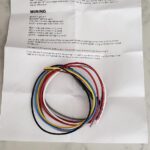
While troubleshooting a few items, I upgraded my front turn signal LEDs, and finally purchased the correct LED flasher relay. My previous relay wasn’t the correct type, and I had used jumper wires to make it work.
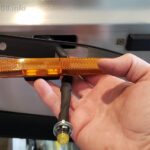
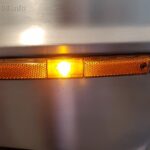
I already had the following supplies on hand:
Costs:
| Item |
Purchase Date |
Vendor |
Quantity |
Cost |
Shipping |
Tax |
Total |
| Side Marker Gasket |
3/10/2022 |
DMC Midwest |
2 |
$5.49 |
$3.37 |
$0.85 |
$15.20 |
| Side Marker Flasher |
3/24/2022 |
dm-eng.weebly.com |
1 |
$41.00 |
$0.00 |
$0.00 |
$41.00 |
| Phinlion Super Bright White Amber Dual Color Switchback LED Bulbs |
10/2/2022 |
Amazon |
1 |
$16.99 |
$0.00 |
$1.32 |
$18.31 |
| LED Flasher Relay |
9/21/2022 |
DMC Midwest |
1 |
$9.92 |
$0.00 |
$0.77 |
$10.69 |
| Amber LED Side Marker Bulbs |
04/16/2022 |
88 Miles |
2 |
|
$0.00 |
$0.00 |
$30.00 |
| Red LED Side Marker Bulbs |
2 |
||||||
| Side Marker Light Socket |
1 |
||||||
| Total |
$115.20 |
One of my CV boots tore open, and threw grease everywhere. Again.

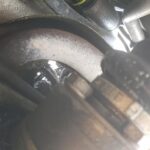
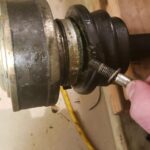
The stock axle flanges are thin, stamped metal. They’re so thin, they require “lock plates” under the bolts, probably so the flange doesn’t twist and tear apart. The flange was damaged by a previous owner, and no longer functional. Every time I put a CV boot on it, it would slide out of position. I previously tried using multiple clamps to keep it in place, but the clamps end up cutting into the boot.
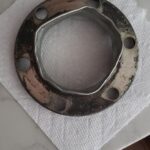
NOS flanges are not available. I tried to repair my flange with a tailpipe expander:
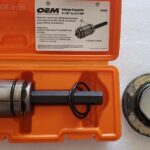

And, while now rounded out perfectly, CV boots still slid right off. It needs to be replaced. I set out to buy a new flange and boot. The axles are Porsche parts, so this shouldn’t be hard, right? I was warned not to buy the wrong size. I researched, and bought a Porsche 911 axle flange with boot, and another spare boot.
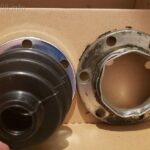
Compared to the stock flange, those were the wrong size. Too small. I didn’t need the Porsche 911, I needed the Porsche 930. Oops. I sent those back.
Next, I ordered some Porsche 930 parts, from different vendors.


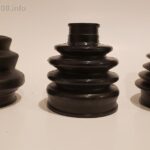
Nothing fit the stock flange, and nothing fit together correctly since all the parts were from different vendors. I returned everything again. I finally settled on one vendor, kartek.com, for a matching flange and boot. I also picked up their stainless clamps. While their boot is a tough fit over the axle shaft, the boot works well.

It was finally time to rebuild the axle. First, I used a wire brush to clean off all the late ’83 undercoating:


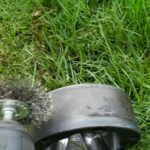
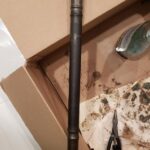
I primed the axles parts:
…and used Rustoleum Gloss Black on everything:


I painted the stock flanges separately, before abandoning the damaged flange.
I purchased many zip ties and clamp sets, and settled on a combination of everything:
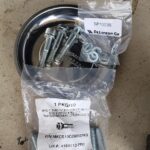


I purchased allen head bolts through DeloreanGo with another order. Later, I decided to remove, paint, and reinstall the other axle. This time I purchased bolts from McMaster-Carr to replace the stock hex bolts. They were only sold in packs of 10, and I needed 12 per axle, which meant I would still need a few stock bolts. And since the new flange is thicker steel, I would not need lock plates. To my horror, the new flange still interfered with the socket bolts! I ended up grinding down the bolts, then painting the heads:

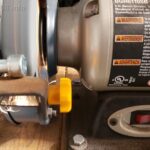
I probably could have spent about $15 on a CV Boot kit from a Delorean Vendor, but not being able to repair or replace my stock axle flange sent me down this rabbit hole.
Costs:
| Item | Purchase Date | Vendor |
Quantity |
Cost |
Shipping |
Tax |
Return Shipping | Total |
| GKN Loebro 300480 Rear Inner Outer CV Axle Boot with Flange For Porsche 911 912 |
4/28/2022 |
eBay |
1 |
37.95 |
0.00 |
3.76 |
12.35 |
12.35 |
| For Porsche 911 Boxster CV Joint Boot OEM GKN LOEBRO 928 332 293 02 |
4/28/2022 |
eBay |
1 |
10.59 |
0.00 |
|||
| Porsche 930 Cv Joint Chromoly Flange – Use With Mini Axle Boot AC501105 |
5/19/2022 |
eBay |
1 |
38.95 |
0.00 |
3.02 |
4.05 |
4.05 |
| Porsche 930 Cv Joint Chromoly Flange – Use With Large Axle Boot AC501110 |
5/13/2022 |
eBay |
1 |
32.95 |
0.00 |
2.55 |
4.75 |
4.75 |
| Irs Cv Boot, for 930 Cv, Off-Road Version, Sold Each, Dunebuggy & VW |
5/27/2022 |
eBay |
1 |
13.99 |
0.00 |
1.08 |
3.90 |
3.90 |
| OEMTOOLS 2-1/8 in. to 3-7/16 in. Tailpipe Expander – Tool Rental |
5/25/2022 |
AutoZone |
1 |
40.00 |
|
|
0.00 |
|
| Upgraded M10 Driveshaft Bolt |
4/18/2022 |
DeloreanGo.com |
12 |
1.50 |
24.99 |
0.00 |
0.00 |
53.09 |
| M10 Spring Washer |
4/28/2022 |
DeloreanGo.com |
12 |
0.30 |
||||
| Stainless CV Boot Clamp Pair |
4/28/2022 |
DeloreanGo.com |
2 |
3.25 |
||||
| Porsche 930 Chromoly Single Axle Boot Flange For 86-2227 or 86-9320 CV Axle Boots 1/2″ Flange Lip – #KTK8693020 |
5/28/2022 |
Kartek.com |
1 |
35.99 |
16.64 |
0.00 |
66.71 |
|
| EMPI 86-2227 Porsche 930 Small Rubber CV Axle Boot For KTK8693020 Or KTK930SDBF Double Boot Flanges – #MRB862227 |
5/28/2022 |
Kartek.com |
1 |
7.50 |
||||
| Norma 60mm To 80mm Diameter Narrow CV Joint Axle Boot Or Hose Clamps 9mm 23/64″ Wide – #HAR79 |
5/28/2022 |
Kartek.com |
2 |
3.29 |
0.00 |
|||
| Dorman CV joint Grease |
5/18/2022 |
Rockauto.com |
2 |
4.78 |
14.98 |
1.57 |
|
11.13 |
| Zinc-Plated Alloy Steel Socket Head Screw M10 x 1.5 mm Thread, 60 mm Long – Pack of 10 |
7/17/2022 |
McMaster-Carr |
1 |
9.74 |
8.17 |
0.78 |
|
18.69 |
| Karoka 12″ Heavy Duty Zip Ties |
7/17/2022 |
Amazon.com |
1 |
9.99 |
0.00 |
0.77 |
10.76 |
|
|
Total |
$185.43 |
The discounted fees with the Expanded-Use Antique plates are nice:
Fee For This Transaction
Renewal Fee : $45.00
Payment Processor Fee : $1.01
Total Fee : $46.01
The fuel pump I purchased roughly 10 years ago was working, however there are now better alternatives. The stock fuel pump setup has a very complicated baffle, pickup hose, and zinc plated steel parts. I previously removed rusted parts and had them replaced. The pickup hose can easily collapse, especially if it’s aged, or slightly twisted. Collapsed pickup hoses will cause the pump to fail, and the car to stall. In my experience, when driving for long periods of time in 90+ degree weather, the pump will start making noise. Unburned fuel returns to the tank at higher temperatures, and the temperature in the tank can quickly elevate. The pump will start moaning loudly, which is unsettling since it’s not clear if it’s about to fail. A workaround is to fill up with fresh gas, which is stored underground at around 60 degrees, and will cool down the pump. Once driving is resumed, the problem will quickly resurface – ask me how I know this!
I had previously replaced my moaning fuel pump because I thought it was about to fail, only to have the new pump behave the same way. I wanted to use one of the newer GM fuel pumps in my car, and find the needed parts to retrofit it into the fuel tank. The new pumps are meant for a Chevy Tahoe with a V8, which has enough fuel pressure for the Delorean’s K-Jetronic mechanical fuel injection. I’ve seen the full kits available from vendors, but I wanted to get a lifetime warranty on the pump from a chain auto parts store. I found a fellow Delorean owner who was selling all the parts needed, with installation instructions.
New parts, ready to go. The new pump also has an integrated fuel level sender, which I removed. My stock fuel level sender is working correctly, which I opted to keep, and eases installation. I bought some long nitrile chemical resistant gloves, but ended up not needing them because my fuel level was low, and regular nitrile gloves were sufficient:
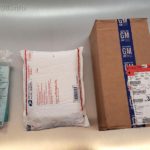

It’s hard to wiggle the fuel hoses off the hard lines, so I ended up cutting them off:
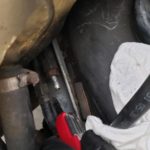
Removing the old pump and baffle setup:
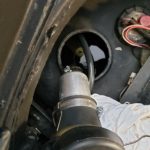

Look at all that crud on the pickup screen:

Included is a flexible ring to clamp down at the top of the tank. The ring has wording on it, including “TOP.” It took me a few minutes to figure out it actually mounted upside-down:



There’s a little locator tab needed for the Chevy Tahoe setup. If you choose to keep it, you need to cut the mounting ring to allow for the tab. I opted to break the tab off. There’s a possibility that I’ve voided the warranty. If I ever use the warranty, I’ll say it broke off during removal:
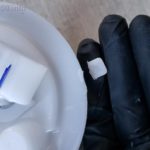

I’ve got about 50 miles on the new pump so far. It’s worked flawlessly, and it’s quiet! Having done this job once, I could probably do it again in about an hour. I’ve got the broken-off tab, fuel level arm, and receipt saved if I ever need to use the warranty.
Costs:
| Item | Purchase Date | Vendor |
Quantity |
Cost |
Shipping |
Tax |
Total |
| Fuel Pump Installation Parts |
9/30/2021 |
88 Miles |
1 |
$75.00 |
$0.00 |
$0.00 |
$75.00 |
| MU1777 Fuel Pump |
11/15/2021 |
Autozone |
1 |
$227.99 |
$0.00 |
$14.25 |
$242.24 |
|
Total: |
$317.24 |